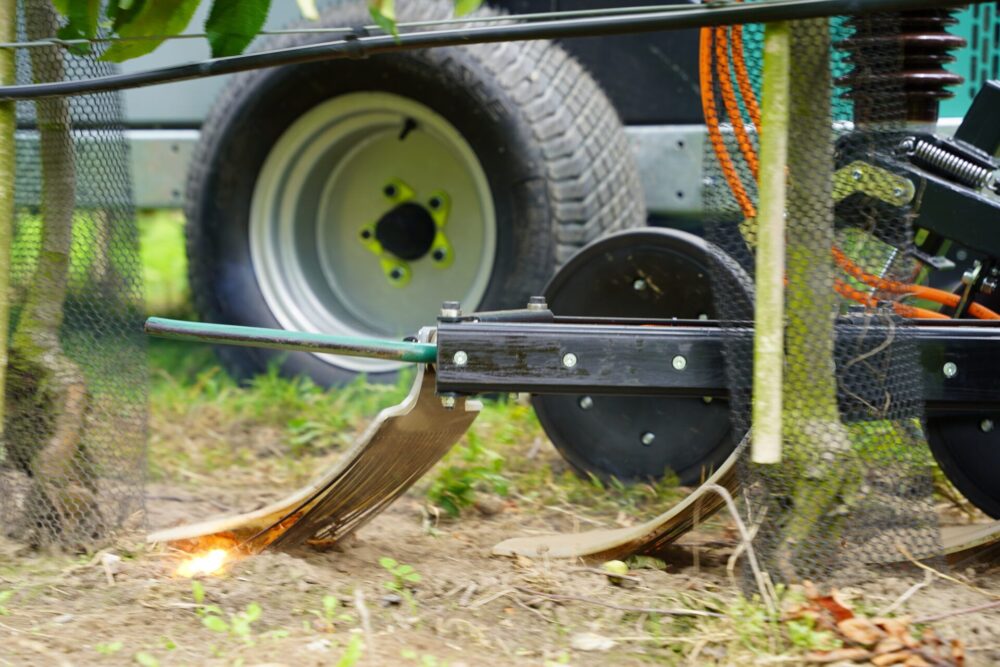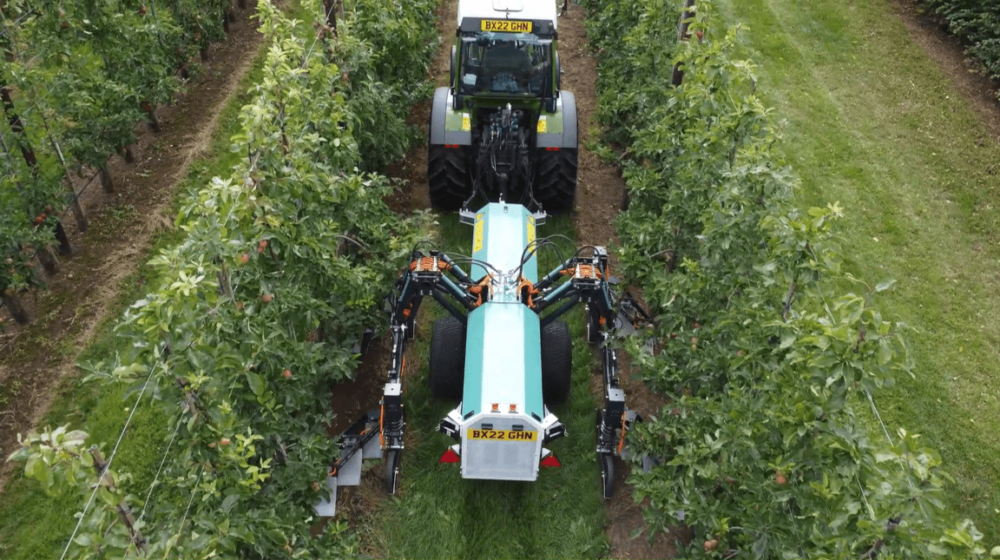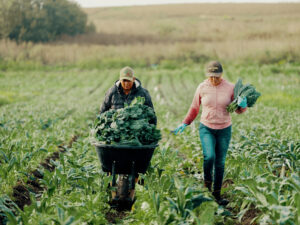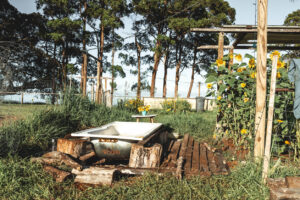Growers may differ on their methods of weed management, but most would agree outsmarting those weeds is one of the toughest tasks in the business for organic farmers and conventional row croppers alike.
Chemicals such as Glyphosate were supposed to make this process cheaper and easier, and they did — but at what many say is a heavy cost to human and planetary health. Throw in sky-high input prices and a growing consumer demand for clean food, and the quest for a better way to weed becomes all the more urgent.
Andrew Diprose, CEO of UK-based agtech startup RootWave, suggests using electricity to “boil the weed inside out from the root up.”
The concept of zapping weeds via electricity has existed for decades. In recent years it’s accelerated into mainstream discussion thanks to concerns around chemicals as well as labor costs and shortages.
RootWave, which just launched a tractor-powered e-weeding machine for fruit orchards, believes it can offer growers a faster, more cost-effective way to zap more weeds across more acreage leveraging its patented high-frequency electricity method, which Diprose recently outlined for AgFunderNews.

‘Physics not chemistry’
RootWave’s technology passes an electrical current through the weed by touching it. The weed’s natural resistance turns that energy into heat, which kickstarts the aforementioned boiling-from-the-root-up-process Diprose describes above.
“It’s physics, not chemistry,” he says as a way of comparing this method of weed treatment to herbicides.
The company started out with a handheld device for the lawn and garden sector; as of a couple weeks ago, it also has a small machine that hitches to the back of a tractor and can treat orchards and vineyards. RootWave is taking reservations now for the latter, which will ship in spring 2024.
Besides electricity being a non-chemical approach to weeding, it’s also better for the soil, Diprose claims. Unlike mechanical weeding with a cultivator, RootWave’s orchard machine doesn’t disturb soil’s structure, the life within it, or its ability to retain moisture.
“It heals the soils and it allows soils to capture more carbon, so it’s region ag friendly too,” he claims.
Another advantage over chemical herbicides is fewer restrictions on when and where a grower can weed, he says. “You can’t spray herbicides in high winds or 24 or even 48 hours before or after rainfall. We don’t have those restrictions; if it’s not raining, you can treat [crops].”
“If you do maths in a weeding season, you can actually treat two or three times as many days and that means the machine can actually cover more hectares in terms of speed and and the ability to cover ground.”
He believes this will not only save growers money, it could also increase revenue from organic sales and allow them to heal their soils and potentially generate revenues through carbon capture.
18,000 HZ and counting
Weed zapping via electricity isn’t without its risks, though. The two biggest are the possibility of fires and danger of lethal shock or another health emergency from a high-voltage currant.
RootWave addresses this by using high frequencies — 18,000 Hertz and above, which the company says is safer for operators and bystanders.
“We switch between positive and negative 18,000 times a second, or 18,000 Hertz,” says Diprose. “Although this is extremely difficult to do technically at the voltages and currents required for e-weeding, we do that because if someone were to touch an electrode, the human body can absorb 2,500 times more energy before you have a terminal event like a heart attack.”
“If someone comes into contact with an electrode, they’ll actually be able to walk away with our technology. With the competing technology in the market, that wouldn’t be the case.”

Trekking towards autonomy
As mentioned, RootWave’s machine is tractor-powered. The company was very intentional about developing this versus an autonomous robotic weeder.
“We steered away from robotics ourselves because we believe that tractors themselves are becoming autonomous,” says Diprose. John Deere and other major manufacturers, after all, “have a far larger R&D budget” than startups like RootWave, and Diprose expects these machines will eventually transition to greener fuels in the future, too.
Once more tractors are autonomous, he says, growers using RootWave could in theory have a carbon negative setup for weeding.
“We did do an integration with a small robot company at one point, just to prove we could power [the weeder] by a battery in an autonomous robot. But we’re not following up on that at this moment, we’re just developing implements because we see tractors as bringing that autonomy to farms.”
He says farmers that have used the machine love it because it simply solves their problem with herbicides they don’t want to use or may not be able to use because of restrictions or weeds becoming less resistant to applications over time.
“They need a new tool and they want a better tool; one that doesn’t cost them the earth, and that’s exactly what we’ve got.”
RootWave landed a $9.7 million series A round in 2020 that included V-Bio Ventures, Rabo Food & Agri Innovation Fund, and Pymwymic. The Yield Lab is also an investor.
Currently, RootWave is conducting a bridge round via Crowdcube to extend its runway and “turbo-charge growth” before heading into a series B, for which it is currently seeking a lead investor.
Diprose says the company already has a number of reservations for the machine. It has hit 50% of its target for next year and believes it will hit 100% soon.

















Sponsored
International Fresh Produce Association launches year 3 of its produce accelerator